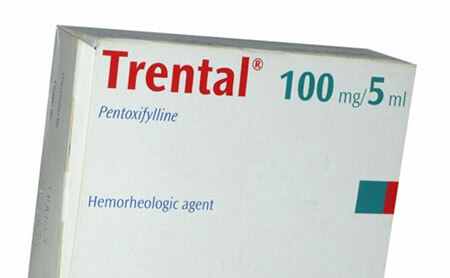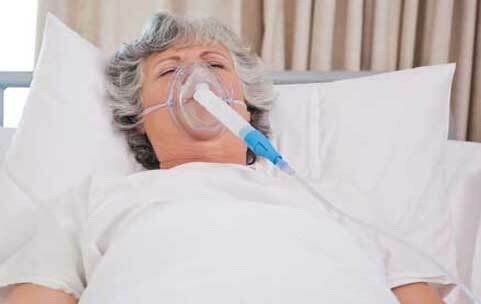Pulmonary hypertension, what is it?
With increasing pressure in the pulmonary artery and associated vessels - doctors talk about the development of pulmonary hypertension. Usually, the disease occurs due to another disorder. But if it is not possible to establish the cause of the disease, then pulmonary hypertension is considered as a primary pathology.
Clinical statistics show that this disease develops very rarely, but this does not detract from its danger: few of the patients manage to survive, especially with an unclear etiology of the disorder.
Pulmonary hypertension is characterized by a decrease in lumen in the pulmonary vessels due to excessive proliferation of the endothelium. As a result, the blood flow and the process of gas exchange are disturbed, which affects the entire body.
The heart seeks to compensate for this deficiency at its own expense, increasing the number of contractions, which inevitably leads to a thickening of the right ventricular myocardium. Normally, each person has the left part of the "motor" is massive, because from here begins a large circle of blood circulation.
One of the consequences of pulmonary hypertension is the pulmonary heart.
It is from a cardiogram that a physician can presume a disease, but in the early stages of a pathology even this diagnostic method does not show significant deviations.
content
- 1 reasons pulmonary hypertension
- 2 symptoms and the degree of pulmonary hypertension
- 3 disease diagnostics
- 4 Treatment of pulmonary hypertension
- 4.1 Surgery
- 5 Prevention of pulmonary hypertension
- 6 Pulmonary hypertension in the IBC 10
reasons pulmonary hypertension
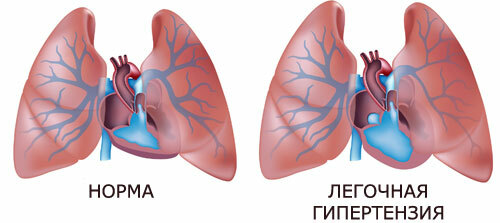
What is pulmonary hypertension
Physicians difficult to call a particular cause ofpulmonary hypertension. Disorders in the growth of the endothelium are associated with changes in the balance of substances entering the body, for example, potassium and sodium.
These chemical elements are directly involved in the process of constriction and expansion of blood vessels, and the body responds to their deficiency with such spasm.
But not everyone develops pulmonary arterial hypertension due to a lack of necessary components, so doctors attach great importance to heredity.
Often, pathology occurs against a background of another disorder, such as chronic obstructive pulmonary disease or congenital heart disease. In such cases, pulmonary hypertension is considered a complication, although this does not exempt from treatment.
A positive point is the clarity of the problem, which makes it possible to choose the right therapeutic course.
The fact of influence of the amino acid "tryptophan" on the growth of the endothelium is considered to be proved. In the 80s of the XX century, rapeseed oil was very popular in Spain, but due to its use, the number of pulmonary hypertension diseases increased significantly.
The laboratory analysis demonstrated the presence in rape of a high concentration of tryptophan, which was the cause of the ailment. In addition, there are cases of the development of the disease due to the use of oral contraceptives and drugs that reduce body weight. Frequent reception of these types of drugs leads to disorders in the body, including.and proliferation of the vascular endothelium.
Symptoms and degrees of pulmonary hypertension
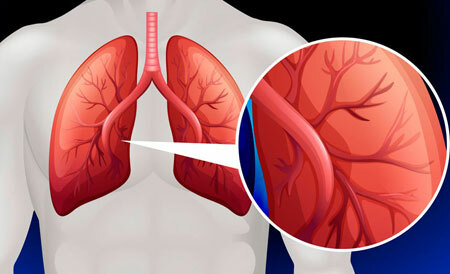
It is not always possible to detect pathology at an early stage, because a person simply does not notice any disorders. One of the bright symptoms of pulmonary hypertension is a decrease in physical activity.
General weakness for unknown reasons often becomes the reason for contacting a doctor, and as a result of the survey, it becomes clear that there is such a serious disorder. Doctors share pulmonary hypertension in degrees of severity that correspond to certain symptoms:
1. Degree I:
- rapid pulse;
- physical loads are transferred easily;
- additional features are missing.
2. Degree II:
- activity of a person is reduced;
- shortness of breath;
- dizziness;
- pain in the thoracic region.
3. Degree III:
- person feels comfort only when not operating;
- all symptoms increase with physical activity.

Development of pulmonary heart
4. Degree IV:
- fatigue does not pass even after sleep;
- symptoms are also observed at rest;
- hemoptysis;
- pulmonary edema;
- syncope;
- swelling of the cervical veins;
- diffuse cyanosis( cyanosis of the skin);
- any load leads to a sharp exacerbation.
Pulmonary hypertension 1 degree manifests itself only in the form of frequent heartbeats. But the ordinary person does not attach any significant significance to this feature. Only a doctor can suspect that something is wrong, and then with sufficient knowledge and experience.
Pulmonary hypertension of the 2nd degree is more pronounced symptoms. The more advanced the disease, the more often shortness of breath and dizziness, and rapid fatigue sometimes takes a chronic form.
Diagnosis of the disease
The ECG indications are the prerequisites for conducting an in-depth diagnosis. This method demonstrates irregularities in the functioning of the heart, which in hypertension suffers first. In general, the complex of measures to detect the disease is as follows:
- Electrocardiogram. Overload of the right ventricle and other disorders.
- Radiographic study. The picture shows the transparency of the pulmonary fields along the periphery, the displacement of the cardiac boundaries to the right side and other changes.
- Respiratory tests. Analyze the gas composition of the exhaled air and the volume of the lungs.
- Echocardiography. Hypertension sets even at an early stage. It is used to determine the pressure in the pulmonary artery.
- Scintigraphy. With the help of radioactive isotopes, a pictorial picture of the state of the pulmonary artery is obtained.
- Computer and magnetic resonance imaging. Used to refine the radiographic images.
- Cardiac catheterization. Provides information on blood flow and pressure inside the heart and nearby vessels. Carried out to determine the appropriateness of treatment.
Normal is the pressure inside the pulmonary artery at 25 mmHg.(systolic) and 8 mm Hg.(diastolic).With hypertension, these parameters exceed 30 and 15 mm Hg.respectively.
Treatment of pulmonary hypertension
It is rather difficult to overcome this disease, and sometimes it is impossible. And yet there are drugs for the treatment of pulmonary hypertension, although their effectiveness in many depends on the stage of the disease.
But first of all doctors recommend to reduce the risks of complications and aggravation of the disease:
- Refusal of pregnancy. The circulatory systems of a woman and a fetus are closely related, therefore an increased burden on the heart with pulmonary hypertension can lead even to the death of a future mother.
- Power limitation. In the diet of cores, there should be no fatty and salty foods. In addition, the daily water norm is only 1.5 liters.
- Exercise is carried out as far as you can, but do not overdo it.
- Vaccination. Inoculations from common diseases will avoid infection and exacerbation of pulmonary hypertension.
Of no small importance is the psychological support of the patient. Of course, patients are different: one ailment is seen as a test of strength, the other - as a hopelessness.
To support a desperate person is the task of family and friends. If a patient does not want to fight for his life, then medicine will not help him.
Secondary pulmonary hypertension requires treatment, primarily of a primary disease. Therapy is sometimes delayed for years, because it is not so easy to stop the growth of the vascular endothelium. In most cases, doctors prescribe a course of special drugs, however, one agent is not preferred.
This complex approach is indicated for this disease:
- Endothelin receptor antagonists inhibit the division of endothelial cells.
- Prostacyclin eliminates spasm of blood vessels and prevents thrombus formation. Are indicated for use in the case of systemic disorders and even with HIV infection.
- Oxygenotherapy saturates the blood with oxygen. In the late stages of the disease, up to 15 liters of gas is required daily.
- Anticoagulants dilute blood and facilitate its flow through the vessels.
- Diuretics remove fluid from the body, which reduces the burden on the heart as a whole.
- Glycosides of natural origin are used to combat heart rhythm disturbances and vascular spasms.
- Vasodilators are needed to increase the lumen in the capillaries and to reduce the pressure in the pulmonary artery.
- Nitric oxide is used at low effectiveness of treatment by other methods. The result is a decrease in pressure in both the pulmonary artery system and in other vessels. The procedures are carried out for 5 hours daily for 2 weeks.
Surgical intervention
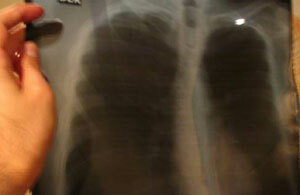
Pulmonary hypertension is often caused by cyanotic heart diseases, which can not be cured by therapeutic methods.
In such cases, it makes sense to perform balloon atrial septostomy: a catheter is cut through the septum between the atria and dilates the resulting hole with a balloon. As a result, oxygenated blood enters the right atrium, which facilitates the patient's condition and reduces the symptoms of the disease.
In particularly difficult situations, a person can be recommended to have a lung and heart transplant. Such an operation is performed only in specialized medical institutions, but there are also contraindications: liver and kidney dysfunction, cancer, HIV infection, etc.
In addition, a certain difficulty is the search for donor organs. And although such a surgical intervention is associated with a high risk for life, modern medicine successfully copes with transplantation.
Prevention of pulmonary hypertension
Preventing pulmonary hypertension is not easy due to the unclear etiology of the disease. If a person has congenital heart defects, sooner or later they will show themselves. However, one should not exacerbate the situation on its own, because taking care of health is the personal task of every individual.
Preventive measures will reduce the risk of developing primary and secondary hypertension with a systematic approach:
- Quitting smoking. Saturate the blood need only useful gases.
- The choice of a harmless profession. Often miners and builders suffer from chronic obstructive pulmonary disease( COPD), which provokes pulmonary hypertension. If you can not change the line of activity, then you need to pay maximum attention to work safety( protective masks, etc.).
- Strengthening of immunity. In a strong organism, faults rarely occur. It is necessary to regularly eat vitamins, get enough sleep and eat right.
- Psychological comfort. Nervous disorders often cause psychosomatic diseases, so negative energy should not be stored in yourself.
- Doing sports with youth creates the prerequisites for the health of the soul and body throughout life.
Pulmonary hypertension is a rare but dangerous disease that can lead to death. Today's medicine offers a comprehensive medical treatment of ailment, although sometimes only organ transplantation will give a positive result.
Pulmonary hypertension in μB 10
In the international classification of diseases of ICD 10 the disease is:
I00-I99 - Diseases of the circulatory system
I26-I28 - Pulmonary heart and pulmonary circulation disorders
I27 - Other forms of pulmonary heart disease
- I27.0 - Primarypulmonary hypertension

